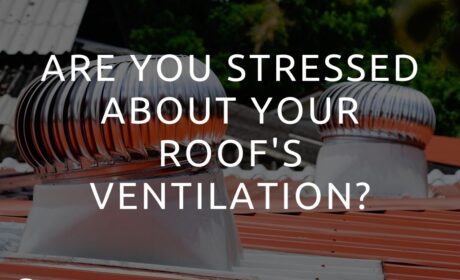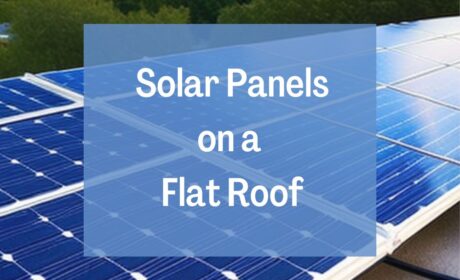
Are you plan to replace the roof of your home? Choosing the right long-lasting roof can be daunting, no matter how experienced you are. There are so many types of roofs to choose from, each with its own pros and cons.
Don’t worry, we’ve got you covered. Let’s look at nine types of roofing systems you should consider for your project. No matter what your needs are, there’s a roofing material for you out there. So let’s get started and find the perfect roof for your home or building!
9 Types of Roofing Systems You Should Consider
Your roof is probably one of the most important parts of your house. Besides keeping your home warm, it also protects you from outside threats. You might be surprised to find out that the type of roof you choose for your home can increase the home’s value quite a bit.
So having a long-lasting roof and maintaining it is crucial. With so many different roofing materials out there, it can be hard to decide. Over 90% of US homes use composite asphalt shingles because they’re inexpensive, durable, and easy to install.
When choosing a roofing material, make sure it’s as durable and long-lasting as your budget allows. Even though you pay more upfront, you’ll save money in the end. Because you won’t have to replace your roof as often.
You need to choose the right roofing material for your unique needs since each one has advantages. Start by thinking about these questions:
- Is this material strong enough for the local weather?
- Is this stuff expensive?
- What’s the shelf life of this stuff?
- How long is the warranty on this product?
- What’s the weight of this stuff?
- Is there a need for special reinforcements?
- Does this material meet local fire codes?
It’s best to talk to a roofing provider about what would work best for your house. We offer free roof consultations and expert advice based on your budget and needs.
Also read: Should I replace or repair my roof in Texas?
Which roof is long-lasting and durable?
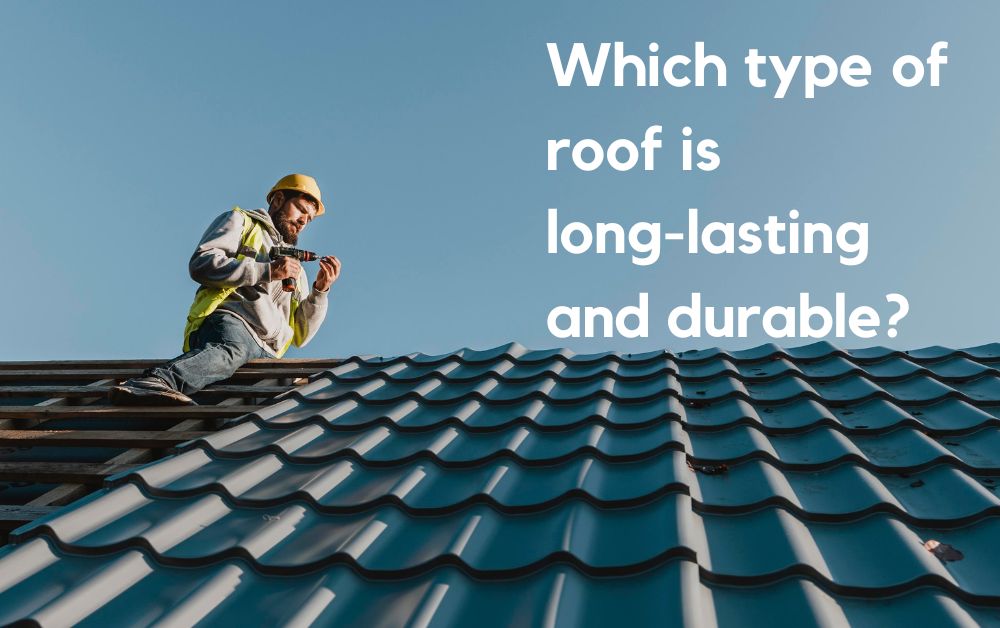
1. Asphalt Shingles
These are most common on residential and commercial buildings. You can choose from a wide range of designs, patterns, and colors. It’s coated with mineral granules and reinforced with organic materials or wood fibers.
On average, you can expect to pay between $3.50 and $5 per square foot to install asphalt shingles. Although prices can range from as little as $2.50 per square foot to as much as $8 or more.
Pros | Cons |
| Easy to install Long life Choosing colors and styles Low cost | Low level of insulation Periodic maintenance is necessary. The environment’s effect |
2. Tile Roof
The most common tile materials are concrete, rubber, and clay. You can expect a tile roof to last 50 years. It takes a lot of support to hold up the tiles. Average costs are often two to three times higher than those of asphalt shingles.
Pros | Cons |
| Low maintenance Long-lasting and durable roof Low energy cost Environmentally friendly Variety of styles | Expensive Difficult to install Breakable Heavyweight |
3. Wood Shakes
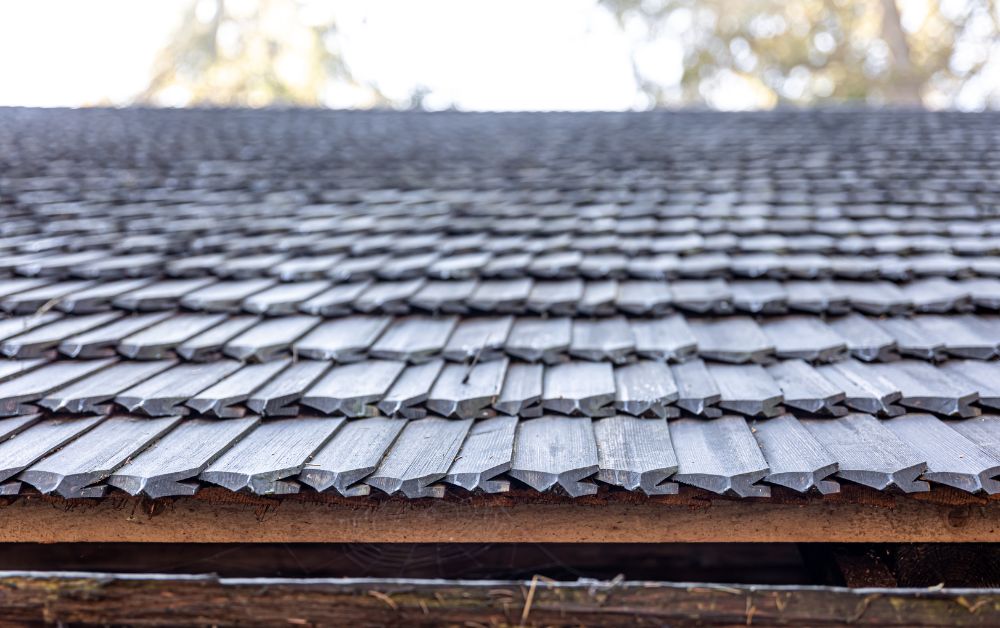
Because they’re thicker and more textured, wood shakes are longer-lasting than wood shingles. To split wood shakes off a block of wood, a blade or hammer is often used, instead of sawing them off.
Wood shakes are fireproof, but they can be a fire hazard in areas with wildfire risks. It’s not recommended to use them in humid areas. Since they are more likely to get fungus, moisture, split, or rot.
Pros | Cons |
| Rustic and beautiful Degradable, recyclable, and renewable Production emits less carbon dioxide Longevity over wood or asphalt Effective insulation | Costlier than wood Needs expert installation Risk of fire Prone to moisture, rot, and fungus |
4. Metal Roof
While metal roofs seem like a newer option, they’ve been around for centuries. It’s still popular to use metal sheets and shingles. All because aluminum and zinc are cheap, low maintenance, and aesthetically pleasing.
Metal roofs can last up to 80 years. They cost between $6 and $14 per square foot. You can get shingles or sheets (also called panels) with a “standing seam.” Another option is to pre-treat the metal with a sealant.
You can paint some styles of metal roofing, too. But installing it incorrectly may result in the product bending or creating ripples.
Pros | Cons |
| Low-maintenance Durable and long-lasting Mimics wood, slate, or asphalt A range of colors Recyclable | Expensive Needs soundproofing Bend or create ripples Need experts to install and repair |
Also read: Can Texas heat damage my roof?
5. Wood Shingles

Wood shingles are made by slicing wood into thin pieces. They’re made of natural woods like cedar, redwood, or southern pine. These are fire-resistant but still forbidden in wildfire areas.
Wood shingles have a beautiful, natural look that is long-lasting and reliable. In addition, wood shingles are environmentally friendly, recyclable, and renewable. Compared to other roofing materials, wood production uses less carbon in its production.
There is a tendency for them to last longer than asphalt shingles. Especially in milder climates where the soil is drier. If used in humid locations, they are more likely to mold, mildew, split, or rot. As a result, they require a greater amount of maintenance than asphalt shingles do.
Pros | Cons |
| Beautiful, natural appearance Biodegradable, recyclable, renewable Low carbon footprint Long-lasting than asphalt roof Energy-efficient | A wildfire hazard Easily rot, split, or mold Needs more upkeep A pest risk Needs pro installation |
6. Clay and concrete roof tiles

You can’t go wrong with clay or concrete roof tiles because they’re durable and long-lasting. Tiles made from clay have smooth, glazed surfaces that resist water and UV rays. They’re fired in kilns and made from natural clay.
It adds a unique, attractive look to your home, and it can last for 50 years or more. Their only downside is that they’re heavy, and may require more structural support. And they are more expensive.
Concrete tiles are made with cement, sand, and water. Then it is molded and cured to create a strong, durable surface. They’re great for areas with a lot of rain or snow because they can handle heavy loads.
Tiles made of concrete also resist fire and insects, and they last for 30-50 years. They’re usually cheaper than clay tiles, but they might chip or break if hit by something heavy.
Both clay and concrete tiles are low-maintenance. And only need occasional cleaning to stay looking good. Nevertheless, they’re more expensive to install than asphalt shingles.
Before deciding which one is right for you, weigh the pros and cons.
Pros | Cons |
| Withstand harsh weather Long-lasting Energy-efficient Aesthetically pleasing Low maintenance | Heavy weight Need roofing reinforcements Expensive installation |
7. Slate Roof
It’s a great choice for your home because slate is durable and long-lasting. You’ll pay between $9 and $20 per square foot, just like clay tiles. The roofs are made from thin, flat slabs of natural stone that are overlapped and clipped.
Properly maintained, they can last for 100 years or more. So they’re a great long-term investment. In addition, they don’t rot or attract bugs, and they are resistant to extreme weather.
Not only are slate roofs super durable, but they’re also super stylish! You can choose from deep, rich grays to vibrant shades of red, green, and purple. Your home will stand out with this natural variation in color and texture.
There are many benefits to a slate roof, but there are a few things to think about too. Firstly, they can be pricey to install. As well as being heavy, they may require extra structural support in your home. Finally, slate tiles can be brittle and may crack or break if hit hard.
Overall, a slate roof is a durable, stylish, and long-lasting choice for your home. Take the time to weigh the pros and cons.
Pros | Cons |
| Long-lasting, durable and attractive Low-maintenance Reliable in extreme weather Pest proof | Expensive Needs extra structural support Breaks when hit hard |
8. Sun Glass and Solar Shingles
Sun glass and solar shingles are innovative roofing materials. Basically, they generate electricity from the sun’s energy. Similar to asphalt shingles, solar shingles and sun glass are installed on roofs.
However, they have photovoltaic cells embedded in them that convert sunlight into electricity. With sun glass, you can get electricity from the sun for 25 years or more. Additionally, it’s resistant to wind, rain, and hail.
Solar shingles are installed in rows on a roof, overlapping each other. These are good for homeowners who want to generate power from the sun. But they are like a more traditional, subtle and long-lasting roof. Similar to sun glass, solar shingles are durable and long-lasting. And they can generate electricity for several decades.
They can reduce energy costs and make a home more energy-efficient. But both solar shingles and sun glass are more expensive to install than traditional asphalt shingles. And some aren’t suited to all homes or climates.
Pros | Cons |
| Survive a high storm Energy-efficient More attractive than solar panels Affordable for new roofs | Expensive Less efficient than solar panels Limited color and design options Access is limited Need replacement every 25 to 30 years |
9. Rolled Roofing
Roofing materials such as rolled roofing might not be familiar to you. It’s the cheapest roofing option. Low-sloped roofs tend to use it, and it’s easier to install than traditional shingles.
Though there are some brown, grey, and green alternatives. You only have black options for rolled roofing. It lasts about ten years, and it’s not very strong. As for aesthetics, rolled roofing isn’t so great because it’s not very pretty.
Pros | Cons |
| Easy installation Fits low-slope roofs Easily portable | Lacks aesthetics Not long-lasting Insufficient strength |
Also read: Roof replacement in Texas
Which long-lasting roof you are going for?
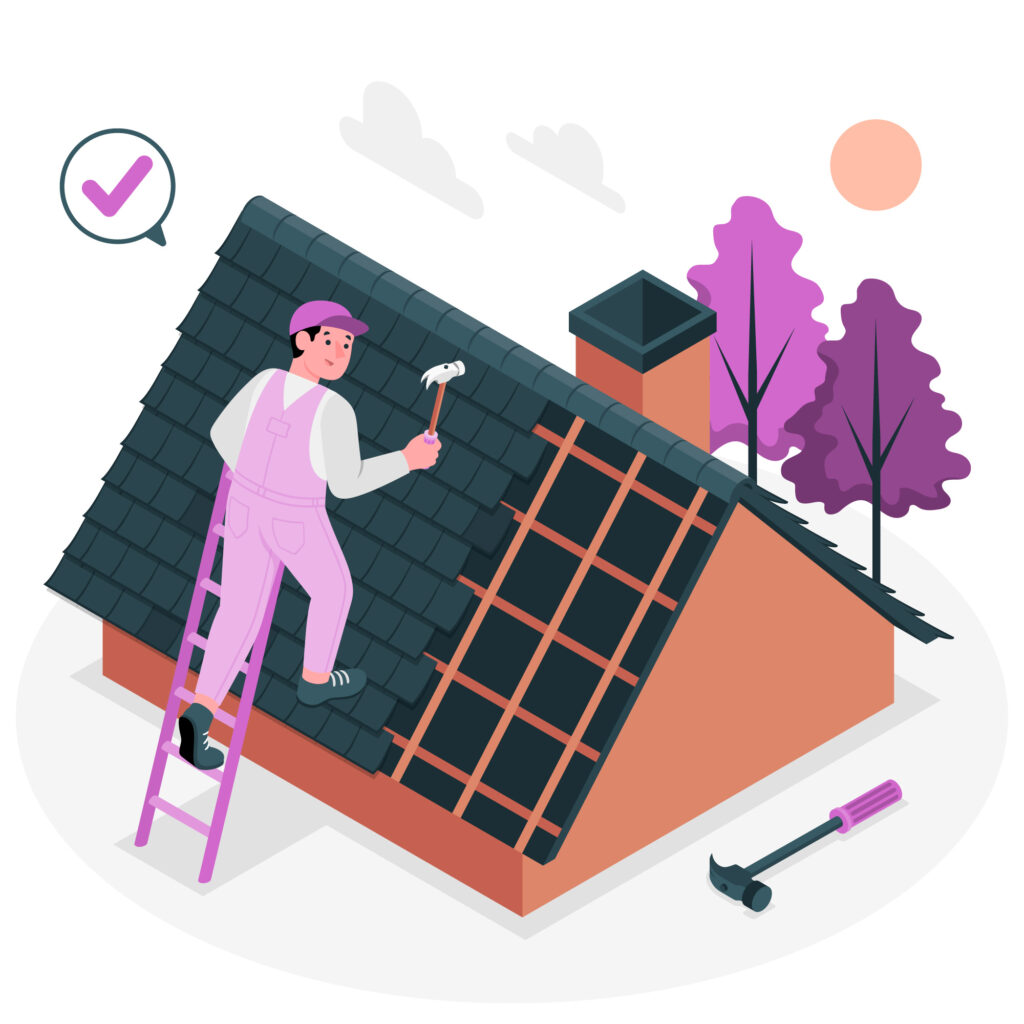
There are lots of long-lasting roofing options to choose from when it’s time for a new roof on your home. Asphalt shingles, metal, tile, and wood are just a few of the materials you can choose from. All of them have their pros and cons. Depending on your budget, location, and preferences, you’ll need the right roofing material.
Invest in a trusted, experienced contractor for the best results. Make sure you hire an experienced, trusted contractor. You can book a free roof consultation with us if you’re still not sure which roof material is best for you.
